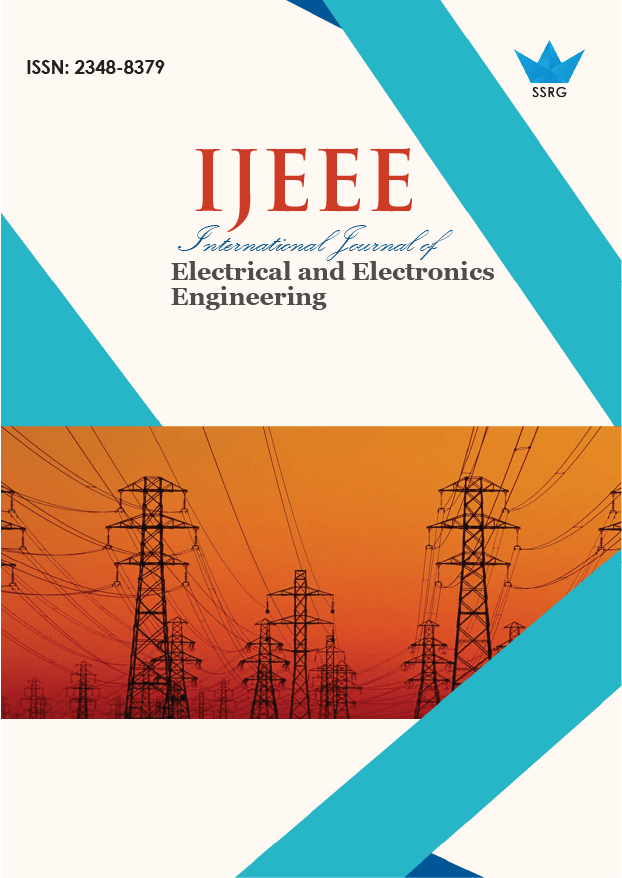Enhancing DICOM Image Compression Using Sheep Flock Optimization Algorithm with Modified Haar Wavelet Approach

| International Journal of Electrical and Electronics Engineering |
| © 2025 by SSRG - IJEEE Journal |
| Volume 12 Issue 9 |
| Year of Publication : 2025 |
| Authors : Navaneethan S, D.Kanchana , Rahul S G, Maheswari.S |
How to Cite?
Navaneethan S, D.Kanchana , Rahul S G, Maheswari.S, "Enhancing DICOM Image Compression Using Sheep Flock Optimization Algorithm with Modified Haar Wavelet Approach," SSRG International Journal of Electrical and Electronics Engineering, vol. 12, no. 9, pp. 168-177, 2025. Crossref, https://doi.org/10.14445/23488379/IJEEE-V12I9P117
Abstract:
Digital Imaging and Communication in Medicine (DICOM) is a medical imaging file standard employed for storing large amounts of data, such as imaging procedures, patient data, and the image itself. With the increasing use of medical imaging in medical diagnoses, it is imperative to have a secure and rapid technique for sharing a considerable number of medical images among medical staff, and compression has often been a choice. Different compression approaches are utilized, including lossless techniques such as Run-Length Encoding (RLE) and lossy methods such as JPEG and JPEG2000. Lossless compression preserves each image's information, which makes it fit for healthcare data where fidelity is vital, like in radiology. At the same time, lossy compression is used to sacrifice some image details to accomplish high compression ratios, frequently employed in situations where slight degradation in quality is acceptable, like in telemedicine applications or while transmitting larger datasets over a limited bandwidth network. DICOM compression standard ensures compatibility and interoperability over dissimilar medical imaging modalities and systems. This article introduces a new DICOM Image Compression Using a Sheep Flock Optimization Algorithm with Modified Haar Wavelet (SFOA-MHW) approach. The presented SFOA-MHW technique uses SFOA to resolve the wavelet discontinuities that take place while performing image compression via thresholding. The SFOA-MHW technique converts the input images into sub-band details and approximation by using MHW, which then employs the threshold. Finally, the SFOA is used to select the threshold values. The SFOA-MHW technique aids in DICOM image compression by preserving fine details with a high compression ratio. The performance evaluation of the SFOA-MHW model is verified utilizing DICOM image sample sets. The experimental values highlighted that the SFOA-MHW technique gains better performance over other techniques in terms of distinct measures.
Keywords:
DICOM, Sheep Flock Optimization, Image Compression, Discrete Wavelet Transform, Threshold Value.
References:
[1] Yu Zhou, Jan Sollmann, and Jianxu Chen, “Deep-Learning-Based Image Compression for Microscopy Images,” Cambridge Prisms: Precision Medicine, vol. 4, 2024.
[CrossRef] [Google Scholar] [Publisher Link]
[2] Vlad-Ilie Ungureanu, Paul Negirla, and Adrian Korodi, “Image-Compression Techniques: Classical and “Region-of-Interest-Based” Approaches Presented in Recent Papers,” Sensors, vol. 24, no. 3, pp. 1-27, 2024.
[CrossRef] [Google Scholar] [Publisher Link]
[3] Jianrui Shao et al., “Light-Field Image Compression based on a Two-Dimensional Prediction Coding Structure,” Information, vol. 15, no. 6, pp. 1-16, 2024.
[CrossRef] [Google Scholar] [Publisher Link]
[4] Shayan Ali Hassan et al., “Rethinking Image Compression on the Web with Generative AI,” arXiv Preprint, 2024.
[CrossRef] [Google Scholar] [Publisher Link]
[5] Yuefeng Zhang, and Kai Lin, “End-to-End Optimized Image Compression with the Frequency-Oriented Transform,” arXiv Preprint, 2024.
[CrossRef] [Google Scholar] [Publisher Link]
[6] Jordan Dotzel et al., “Exploring the Limits of Semantic Image Compression at Micro-Bits per Pixel,” arXiv Preprint, 2024.
[CrossRef] [Google Scholar] [Publisher Link]
[7] Aryan Kashyap Naveen et al., “Autoencoded Image Compression for Secure and Fast Transmission,” arXiv Preprint, 2024.
[CrossRef] [Google Scholar] [Publisher Link]
[8] Hajar Maseeh Yasin, and Adnan Mohsin Abdulazeez, “Image Compression Based on Deep Learning: A Review,” Asian Journal of Research in Computer Science, vol. 8, no. 1, pp. 62-76, 2021.
[CrossRef] [Google Scholar] [Publisher Link]
[9] Rajiv Ranjan, and Prabhat Kumar, “An Improved Image Compression Algorithm using 2D DWT and PCA with Canonical Huffman Encoding,” Entropy, vol. 25, no. 10, pp. 1-24, 2023.
[CrossRef] [Google Scholar] [Publisher Link]
[10] Roman Starosolski, “New and Specialized Methods of Image Compression,” Journal of Imaging, vol. 8, no. 2, pp. 1-2, 2022.
[CrossRef] [Google Scholar] [Publisher Link]
[11] G. Muni Nagamani, and Eswaraiah Rayachoti, “Deep Learning Network (DL-Net) based Classification and Segmentation of Multi-Class Retinal Diseases using OCT Scans,” Biomedical Signal Processing and Control, vol. 88, 2024.
[CrossRef] [Google Scholar] [Publisher Link]
[12] Thomas Buddenkotte et al., “Calibrating Ensembles for Scalable Uncertainty Quantification in Deep Learning-Based Medical Image Segmentation,” Computers in Biology and Medicine, vol. 163, 2023.
[CrossRef] [Google Scholar] [Publisher Link]
[13] Abdul Hannan Khan et al., “Intelligent Model for Brain Tumor Identification using Deep Learning,” Applied Computational Intelligence and Soft Computing, vol. 2022, no. 1, pp. 1-10, 2022.
[CrossRef] [Google Scholar] [Publisher Link]
[14] Ali Raza et al., “Novel Transfer Learning Based Deep Features for Diagnosis of Down Syndrome in Children Using Facial Images,” IEEE Access, vol. 12, pp. 16386-16396, 2024.
[CrossRef] [Google Scholar] [Publisher Link]
[15] Bindu Puthentharayil Vikraman, and A. Jabeena, “Segmentation based Medical Image Compression of Brain Magnetic Resonance Images using Optimized Convolutional Neural Network,” Multimedia Tools and Applications, vol. 83, no. 9, pp. 26643-26661, 2023.
[CrossRef] [Google Scholar] [Publisher Link]
[16] Bing Leng et al., “Deep-Orga: An Improved Deep Learning-Based Lightweight Model for Intestinal Organoid Detection,” Computers in Biology and Medicine, vol. 169, 2024.
[CrossRef] [Google Scholar] [Publisher Link]
[17] Gandi Satyanarayana et al., “A Mass Correlation based Deep Learning Approach using Deep Convolutional Neural Network to Classify the Brain Tumor,” Biomedical Signal Processing and Control, vol. 81, 2023.
[CrossRef] [Google Scholar] [Publisher Link]
[18] Monagi H. Alkinani, E.A. Zanaty, and Sherif M. Ibrahim, “Medical Image Compression based on Wavelets with Particle Swarm Optimization,” Computers, Materials & Continua, vol. 67, no. 2, pp. 1577-1593, 2021.
[CrossRef] [Google Scholar] [Publisher Link]
[19] Mingwei Lei et al., “Improved YOLOv5 Based on Multi-Strategy Integration for Multi-Category Wind Turbine Surface Defect Detection,” Energies, vol. 17, no. 8, pp. 1-25, 2024.
[CrossRef] [Google Scholar] [Publisher Link]

 10.14445/23488379/IJEEE-V12I9P117
10.14445/23488379/IJEEE-V12I9P117